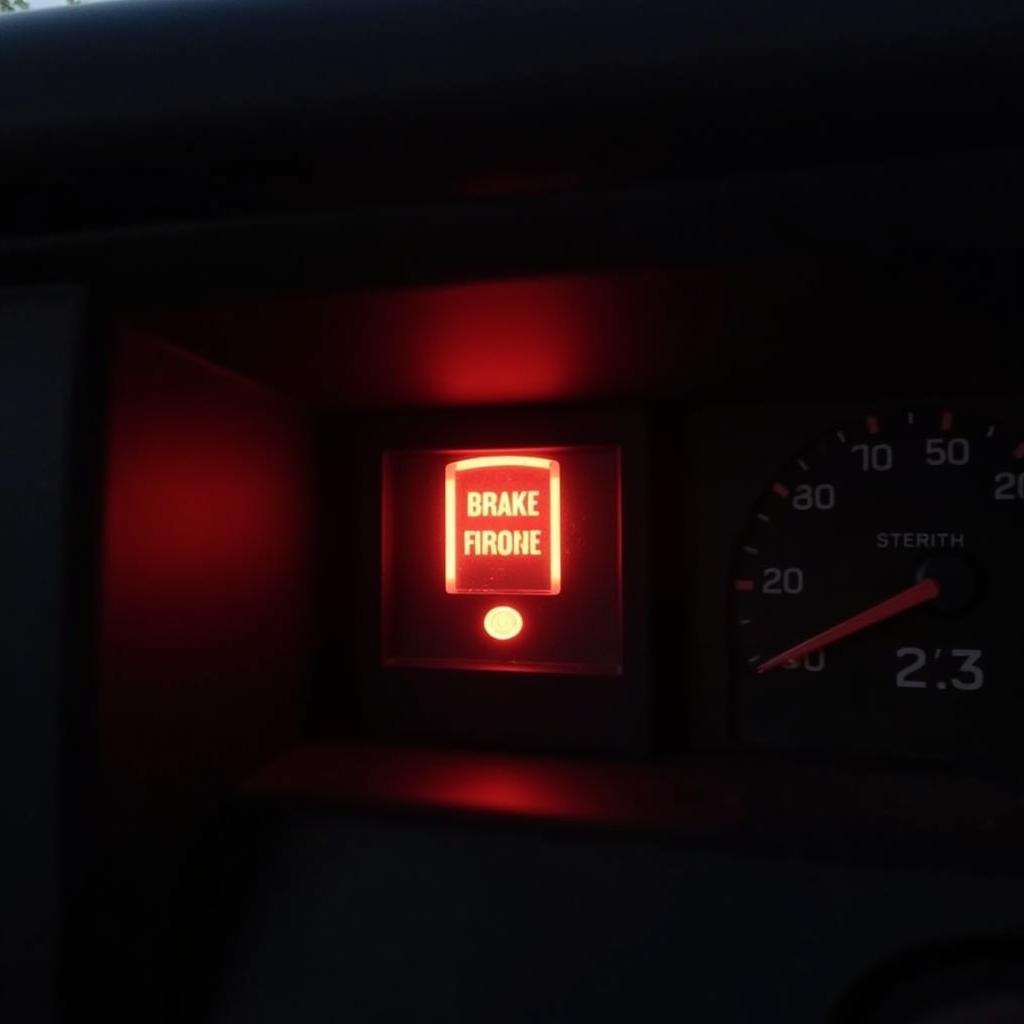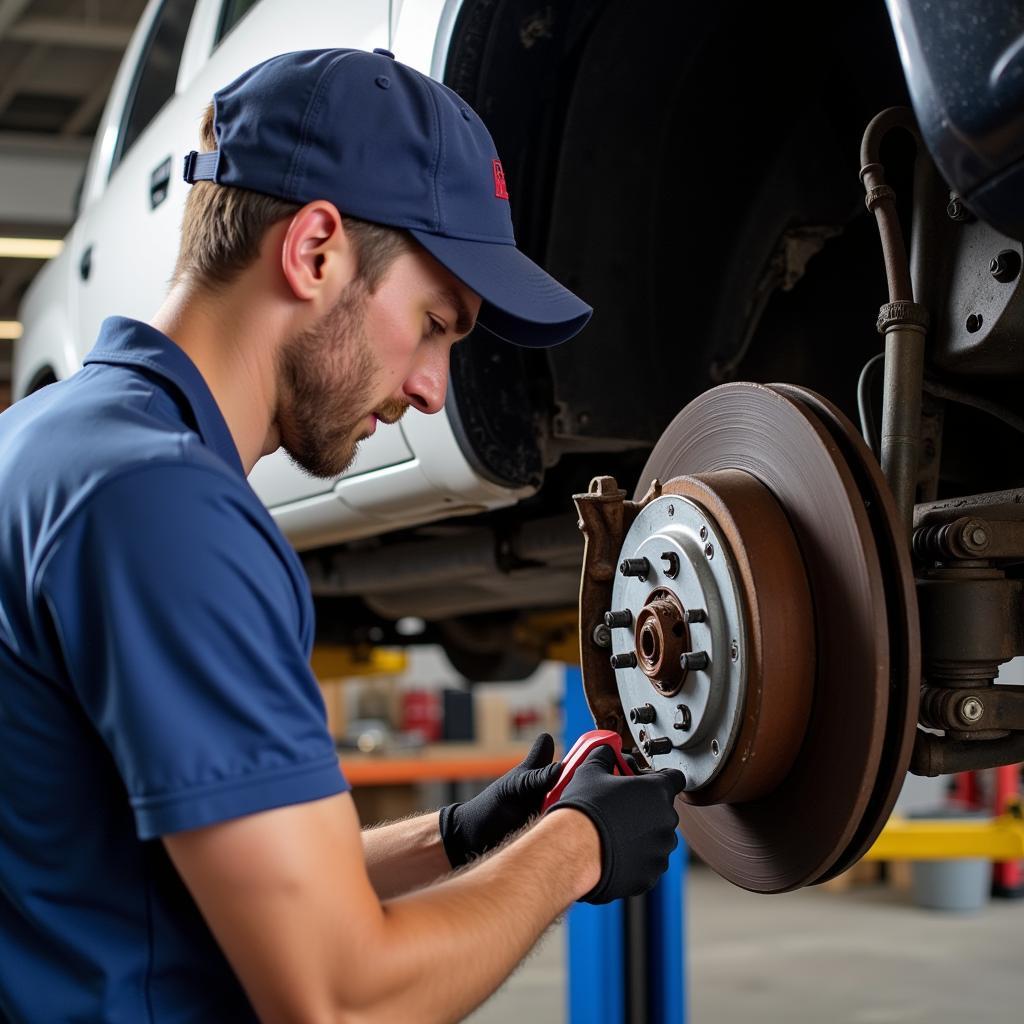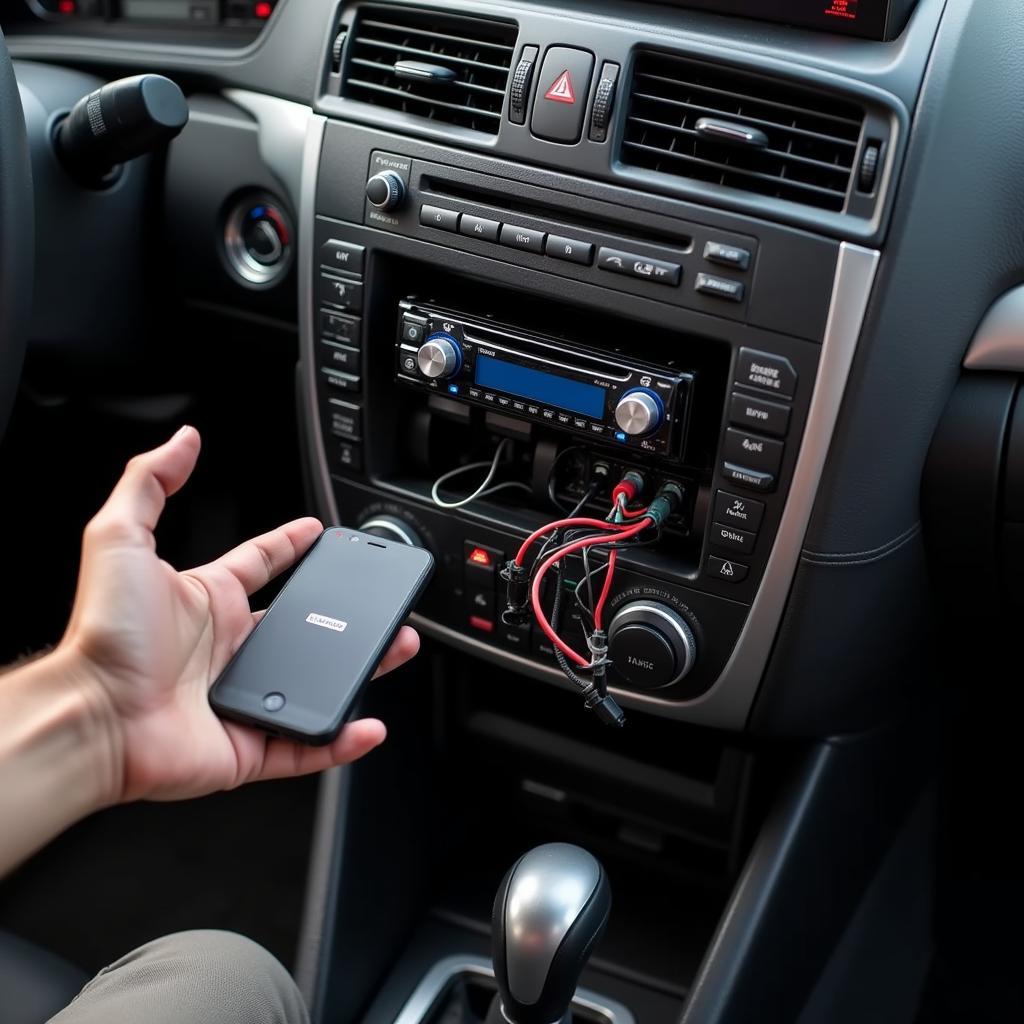The brake warning light on your 1995 Chevy Silverado 2500 is a crucial safety feature, illuminating when the vehicle’s onboard computer detects an issue within the braking system. While this light can sometimes indicate a minor issue, it should never be ignored. Addressing the underlying problem promptly ensures your safety and prevents further damage to your truck’s braking components. This comprehensive guide delves into the common causes of a lit brake warning light on a 1995 Chevy Silverado 2500 and provides troubleshooting steps to help you diagnose and potentially resolve the problem.
Understanding Your Truck’s Brake Warning System
Your Silverado’s brake warning light is connected to several components, including the parking brake, brake fluid level sensor, and the ABS (Anti-lock Braking System) control module.
- Parking Brake: If the parking brake is even slightly engaged, the warning light will illuminate.
- Low Brake Fluid: A leading cause of brake light activation is low brake fluid, often indicating a leak in the system.
- ABS Issues: Problems within the ABS system, such as faulty wheel speed sensors or a malfunctioning control module, can also trigger the warning light.
 Brake Warning Light on Dashboard
Brake Warning Light on Dashboard
Troubleshooting a 1995 Chevy Silverado 2500 Brake Warning Light
Before diving into more complex diagnostics, start with these basic checks:
- Check the Parking Brake: Ensure the parking brake is fully disengaged. Even a slight engagement can illuminate the warning light.
- Inspect Brake Fluid Level: Park your truck on a level surface and open the hood. Locate the brake fluid reservoir (usually near the firewall on the driver’s side) and check the fluid level. It should fall between the “Min” and “Max” markings.
Low Brake Fluid: Causes and Solutions
If the brake fluid level is low, there might be a leak in the system.
- Inspect for Leaks: Carefully examine the brake lines, hoses, calipers, and wheel cylinders for any signs of fluid leakage. Look for wet spots, drips, or corrosion around these components.
- Address the Leak: Repairing a brake fluid leak often requires specialized tools and knowledge. If you locate a leak, it’s recommended to seek professional assistance from a qualified mechanic.
ABS System Issues
If the parking brake and brake fluid level are fine, the problem might lie within the ABS system.
- Visual Inspection: Check the ABS wiring and connectors for any visible damage, loose connections, or corrosion.
- Diagnostic Scanning: To pinpoint the exact issue within the ABS system, a diagnostic scan tool is required. This tool can read trouble codes stored in the ABS control module, providing valuable insights into the problem.
When to Seek Professional Help
While some brake light issues can be resolved with basic troubleshooting, seeking professional help is crucial when:
- You suspect a brake fluid leak but cannot locate it.
- The brake pedal feels spongy or unresponsive.
- You hear unusual noises when applying the brakes.
- The brake warning light remains illuminated even after addressing basic checks.
 Professional Mechanic Inspecting Brake System
Professional Mechanic Inspecting Brake System
Conclusion
Addressing a brake warning light on your 1995 Chevy Silverado 2500 is crucial for ensuring your safety and preventing further damage to the braking system. While basic checks like verifying the parking brake and inspecting brake fluid levels can be performed independently, seeking professional assistance is essential for complex issues or suspected leaks. Remember, timely maintenance and prompt attention to warning signs are key to maintaining a safe and reliable driving experience.

